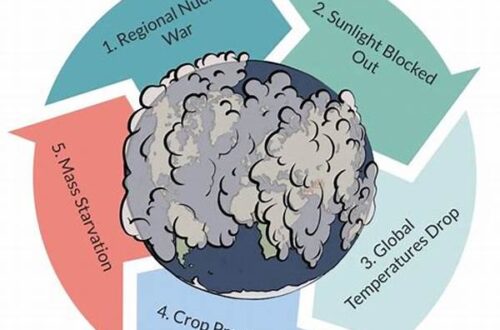The landscape of global defense is undergoing a significant transformation, driven by rapid advancements in technology and shifting geopolitical dynamics. Central to this evolution is the imperative of weapons system modernization programs, which seek to enhance national security capabilities by updating and upgrading military arsenals. These programs are crucial not only for maintaining competitive advantage but also for ensuring the effective deterrence of potential threats. Through comprehensive modernization initiatives, nations aim to integrate advanced technologies, improve operational readiness, and bolster defense capabilities.
The Need for Modernization in Defense
Weapons system modernization programs have become essential in addressing the challenges presented by evolving threats. Modern conflicts increasingly demand sophisticated and technologically advanced weaponry, prompting governments to invest in upgrading their military capabilities. These modernization efforts encompass a wide range of activities, from updating existing systems with new software and components to developing entirely new weapons platforms. By doing so, military forces can ensure they are equipped to face contemporary challenges and operate effectively in complex, multi-domain environments. The ultimate goal of these programs is to maintain strategic superiority and safeguard national interests in an ever-changing global landscape.
Key Components of Modernization Programs
1. Technology Integration: Weapons system modernization programs focus on integrating cutting-edge technologies such as artificial intelligence, cyber defense, and autonomous systems, enhancing the precision and efficiency of military operations.
2. Capability Enhancement: These programs emphasize upgrading weaponry capabilities, ensuring that defense systems remain effective and relevant in addressing contemporary security threats.
3. Operational Readiness: By focusing on upgrading training and maintenance protocols, modernization programs help ensure that military forces are prepared to respond swiftly and efficiently to emerging threats.
4. Strategic Deterrence: The primary aim of weapons system modernization programs is to maintain a credible deterrent posture, discouraging adversaries from engaging in hostile actions.
5. Interoperability: Modernization initiatives aim to enhance the ability of military systems to work seamlessly with allied forces, promoting coalition operations and joint missions.
Challenges of Implementing Modernization Programs
Implementing weapons system modernization programs is not without its challenges. One significant obstacle is the financial burden associated with these initiatives. Developing and deploying advanced technologies requires substantial investment, and budgetary constraints can impede progress. Additionally, modernization programs must contend with bureaucratic hurdles, including procurement processes and regulatory requirements, which can delay implementation. Ensuring that modernization efforts keep pace with technological advancements requires continuous adaptation and flexibility. Addressing these challenges is essential to achieving the goals of modernization programs and sustaining their long-term viability.
Another challenge lies in the management of legacy systems. Balancing the need to maintain current operational capabilities while integrating new technologies can be complex. Modernization programs must address compatibility issues and ensure seamless integration across diverse platforms. The rapid pace of technological change necessitates ongoing evaluation and adaptation, ensuring that modernization initiatives remain responsive to emerging threats and innovative advancements. Navigating these complexities requires strategic planning, collaborative partnerships, and a commitment to agile implementation.
The Strategic Importance of Modernization
Weapons system modernization programs play a pivotal role in strengthening national security and defense postures. By updating and enhancing military capabilities, nations can ensure they are prepared to face an array of potential threats, from conventional conflicts to asymmetrical warfare. Modernization programs contribute to maintaining strategic deterrence, dissuading adversaries from engaging in aggressive actions. Furthermore, these initiatives bolster international alliances by promoting interoperability and cooperation among allied forces. Through comprehensive modernization efforts, nations can uphold their commitment to global security and defense stability.
The strategic importance of weapons system modernization programs extends beyond immediate military benefits. By investing in these initiatives, nations foster technological innovation and stimulate economic growth. Defense-related research and development often lead to advancements with civilian applications, contributing to broader societal progress. Additionally, modernization programs enhance national resilience, ensuring that military forces remain agile and adaptable in the face of evolving challenges. By prioritizing modernization, nations reaffirm their dedication to safeguarding their sovereignty and global peace.
Future Prospects of Modernization Initiatives
Looking to the future, weapons system modernization programs are set to play an increasingly critical role in shaping global defense strategies. As technological advancements continue to accelerate, modernization efforts will need to evolve accordingly. The integration of emerging technologies such as artificial intelligence, quantum computing, and hypersonic capabilities will redefine military operations and strategic planning. Nations must remain vigilant in adapting their modernization programs to incorporate these innovations, ensuring continued relevance and effectiveness in the ever-changing security landscape.
Continued international collaboration and strategic partnerships will be essential for the success of future weapons system modernization programs. By fostering cooperative relationships, nations can share insights, resources, and expertise, enhancing their collective defense capabilities. As geopolitical tensions persist and new threats emerge, the imperative for robust modernization programs will remain central to maintaining a secure and stable global order. Through sustained commitment to innovation and collaboration, nations can navigate the challenges of the modern era and safeguard their future.





